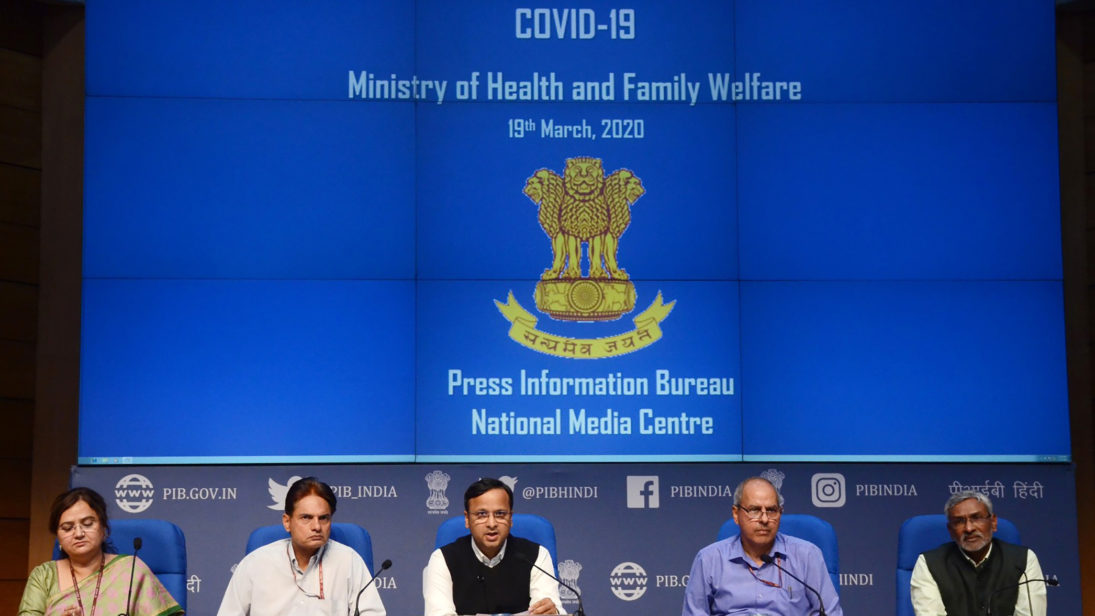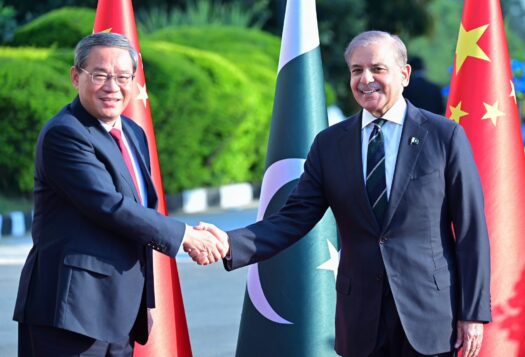
Amidst a rising number of positive COVID-19 cases, on March 24, Indian Prime Minister Narendra Modi announced a 21-day nationwide lockdown with stringent restrictions requiring people to remain at home. While the lockdown was targeted at controlling the spread of the virus, concern quickly shifted to the trade-off between saving lives versus ensuring livelihoods for millions of vulnerable workers – many fleeing cities to get to their homes in rural areas after the lockdown announcement. In a bid to offer financial support to more vulnerable populations, the Indian Finance Minister Nirmala Sitharaman announced a stimulus package worth approximately USD $22.5 billion, which featured short-term measures including promises to ensure food security, direct cash transfers for the poor, and insurance coverage for health workers.
However, to fight against the COVID-19 pandemic, India still needs to ensure community-based testing, tracing, and treating patients at a large scale, all of which require a radical overhaul in the existing asymmetric model of healthcare delivery across the states. Given the skewed distribution of healthcare, it is a steep challenge to forestall communal spread or “stage three” of the virus. The healthcare system in India is dominated by the private sector, but the costs associated with any major healthcare crisis require the support of the public sector to ensure affordable healthcare services are provided equitably to all and not just a privileged few.
India’s Healthcare Landscape
To fight against the COVID-19 pandemic, India still needs to ensure community-based testing, tracing and treating patients at a large scale, all of which require a radical overhaul in the existing asymmetric model of healthcare delivery across the states.
India’s healthcare system is dominated by the more-costly private sector, which delivers an estimated 75 percent of health services and caters to both rural and urban areas. Meanwhile, India spends substantially less of its GDP than most countries on public healthcare. As the private sector is much less regulated, there is genuine criticism against its dominance in India due to concerns about cost, equity, and quality of healthcare.
The share of out-of-pocket spending by patients within the private sector is also much higher than most other developing countries. According to a 2010 study, approximately 63.22 million individuals in India were pushed below the poverty line in 2004 due to out-of-pocket healthcare expenditure. The main issue for the spread of a disease like COVID-19 then is that many will not be able to afford private treatment or testing, while public facilities (and some private facilities as well) will likely be less prepared to acquire necessary equipment in the short-term.
There are also significant socioeconomic disparities in terms of equitable access to quality healthcare – such as caste, class, and gender – as well as a strong urban-rural divide. Cities and urban areas across India, which have a more robust private healthcare system, are more prepared to respond with large-scale testing and treatment requirements when compared to lower-funded public health facilities in rural areas — home to more than 60 percent of the Indian population.
These inequalities are compounded in response to COVID-19 when considering broader reports throughout India’s medical sector on lacking access to basic medical equipment and facilities for those receiving and providing treatment. Thus far, it is unclear how the Indian government at the center aims to mitigate the challenges stemming from an asymmetric, more privatized healthcare system. Many states are also entering into a fiscally scarce financial position, lacking independent ability to boost spending in enhancing public health capacity, unless the central government steps in to support the states.
Variations in State Healthcare
In India’s healthcare system, public health is primarily overseen and managed by state governments. As such, there is substantial variation across states in terms of how much is allocated for healthcare spending. For instance, considering statewide allocation of health expenditure from 2015 to 2018, it can be inferred that West Bengal and Tamil Nadu have consistently increased their revenue share of health spending, while the capital share of health expenditure has consistently increased in states like Maharashtra, Madhya Pradesh, and Haryana. The level of revenue versus capital shares of health expenditure can have implications on the availability of critical care infrastructure (covered as part of capital expenditure), ensuring better healthcare infrastructure in the states.
In the case of ensuring any large scale response to a pandemic like COVID-19, adding new beds, increasing capacity of intensive care units (ICUs), arranging ventilators, and making other infrastructural arrangements is not possible overnight for states with usually low capital expenditure allocation. In a crisis like a pandemic outbreak, it is the responsibility of the public sector to provide the basic services on the ground – and many states simply may not be able to do this without the support of the private sector.
As indicated by data shown in Figure 1 and Figure 2 below, the utilization of public health facilities in both rural and urban areas remain low and varies across one state to another. States that spend more on public health — take Kerala, for instance, that spends a relatively larger share of public expenditure on health and has better facilities in place — may naturally tend to see a greater use of public resources. Figure 2 indicates that the percentage of both hospitalized and non-hospitalized cases in urban areas is generally higher in private facilities across reported states, except Odisha and Assam, highlighting the broad reliance on private facilities. The data also suggests which states may have a relatively stronger, and more decentralized (within rural-urban areas) public health system to respond to a healthcare emergency.
Figure 1: Healthcare Usage in Urban Areas (2014)
Figure Two: Healthcare Usage in Rural Areas (2014)
Source: Household Healthcare Utilization & Expenditure in India: State Fact Sheets, Ministry of Health and Family Welfare, Government of India.
India’s healthcare system is also notably unprepared in terms of health insurance coverage and safety nets. There are wide-spread deviations across states in terms of insurance coverage. As of 2017, only around 44 percent of the population in India had a health insurance policy. In the absence of financial protection, households often adjust their health expenditure either by divesting savings, borrowing, selling assets or by forgoing treatment. To overcome such challenges, the National Health Authority has said it will cover the COVID-19 treatment of the poor in private hospitals through Ayushman Bharat – the national insurance scheme for the poor in India. This step aims to provide cover to the poorer section of the population while ensuring that they are not deprived of medical attention and do not end up contributing to community transmission. However, there are some concerns on how effectively this can be implemented.
Tapping Into Private Sector Capacity
Layers of bureaucratic hurdles have often made public-private partnerships extremely difficult and this is one of the main reason that healthcare asymmetries have remained so persistent in India. Given the issues of weak public health sector capacity in most of the country, states will need to work closely in partnership with stakeholders in the private health sector. The private health sector has a better diagnostic infrastructure that is critical for testing and tracing COVID-19 as well as better supply-chain networks with pharmaceutical firms that assist in treatment for those who test positive. In a health emergency, it is important for states to tap into the private sector capacity and utilize it to its fullest possible extent.
Given the issues of weak public health sector capacity in most of the country, states will need to work closely in partnership with stakeholders in the private health sector. The private health sector has a better diagnostic infrastructure that is critical for testing and tracing COVID-19 and better supply-chain networks with pharmaceutical firms that assist in treatment for those who test positive.
If the objective remains to ramp up mass testing at the community level across states to check for positive cases of COVID-19, the central government must use existing large private diagnostic labs to increase production of indigenous test kits and service these along with other medical equipment like ventilators, ICU beds, and help in creating new makeshift health facilities through private-public capital.
The state health departments have leverage in ensuring public provisioning of health services through designated decentralized agencies (including chief medical officers, paramedics, primary health centers, community health centers in rural areas). Thus, a coherent partnership strategy to enable and promote private-public cooperation in the days and weeks ahead can help ensure a more effective emergency response.
Conclusion
The next two to three weeks are critical to watch for India’s effort to “flatten the curve” and assume a war-like approach to test, trace, and treat in communities across states. The crisis response also gives the central government and respective state governments the opportunity to transform the weak health system through greater financing, more coordination between authorities, and entwined public-private partnership—all of which can go a long way in addressing the pandemic and the in-built asymmetries and persistent fragility in India’s medical healthcare system.
***
Image 1: Press Information Bureau, India


